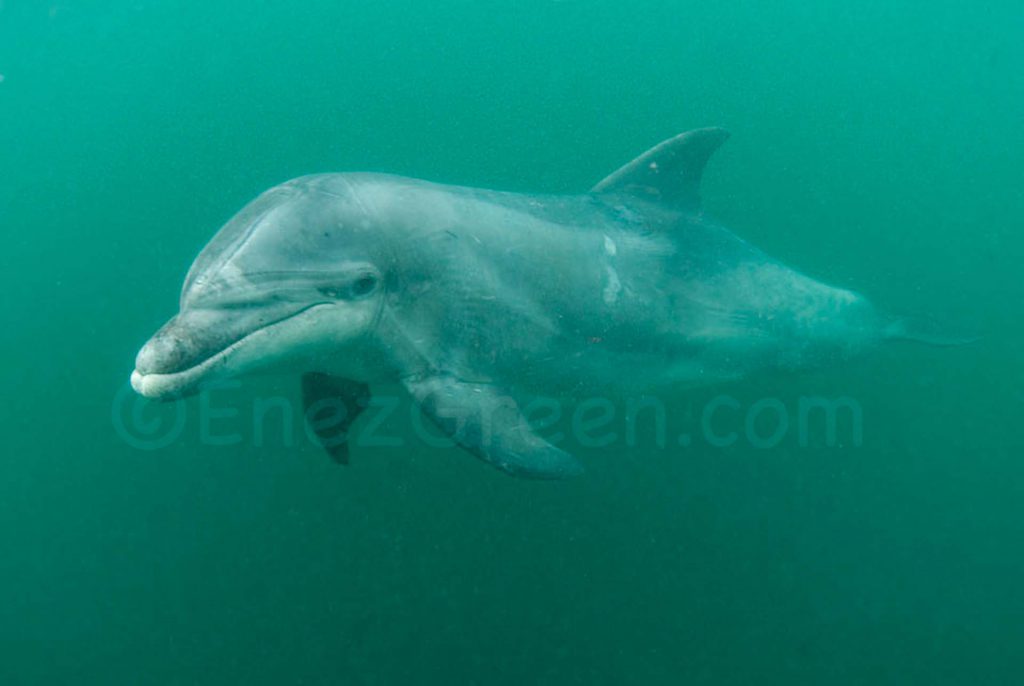One of the best coastal spots for dolphin watching
Contrary to common belief, the Chanonry site is in many ways better than certain boat trips offered in various places around the Moray Fifth. It is even one of the best places in Europe to watch dolphins from the coast.
The colony of bottlenose dolphins the world’s northernmost
At rising tide, 2–3 hours after low tide, visitors keep watching the river to catch a sight of the dorsal fins of cetaceans. The bottlenose dolphins (Tursiops truncatus) that are seen in the Moray Firth are part of a resident population that uses the whole North-East coast of Scotland. This is a relatively small population of dolphins and they can be spread out over a large area. Scientific observations and photo-identification show that the group comprises nearly 130 individuals in the Moray Firth Estuary. From May to September, the number of dolphins in the coastal areas of the Moray Firth increases due to the dolphins feeding on salmon as they enter and leave the rivers. Research has shown that this species is a predatory of the harbour porpoise: a third of porpoise carcasses observed by specialists between 1992 and 2002 had traces indicating that death was due to attacks by bottlenose dolphins. The dolphins are present in the area all year round – however they can be harder to spot outside summer months as they may range over a wider area and look further out to sea for their food. The colony of bottlenose dolphins the world’s northernmost.
Easier observation than on a boat
Dolphin watching from the coast has various major advantages. Unlike on overcrowded boats, there is ample room on the shore, which enables walkers to watch the dolphins moving around and observe their behaviour. It is a delight for wildlife video or photography buffs, who can leisurely without being bothered by the inevitable motion that is inherent to bots as well as overexcited passengers passing within their camera’s field while they are shooting.
Minke whales and harbour porpoises can also be spotted from many points along the coastline. Moreover, with or without marine mammals, the place is easily accessible and visitors can park nearby. The wonderful landscapes towards the south of the Moray Firth with Fort George in the foreground are worth the trip.
Predicting the impact of developments on the Moray Firth dolphins and their habitat
A group of organisations have joined forces to understand the potential impact of boat movements on the small and isolated population of the bottlenose dolphins living in the Moray Firth.
A computer model has been developed by the University of Aberdeen to allow predictions to be made about effects on dolphins from proposed developments in the Moray Firth area. Scenarios included planned offshore renewable facilities at Nigg and Whiteness and associated vessel movements.
Boats which behave predictably are far less likely to have an adverse effect on dolphins compared to those which follow the animals. In addition, the scientists recommend the boats present on the spots of foraging for cetaceans to move quickly and not to drag on in order to avoid the risk of disturbing the activity of dolphins. These results are highlighted in a new report published by Scottish Natural Heritage.
Two of the main conservation objectives for the Moray SAC are to avoid a decline in the dolphins’ habitats in the area and to prevent significant disturbance.



